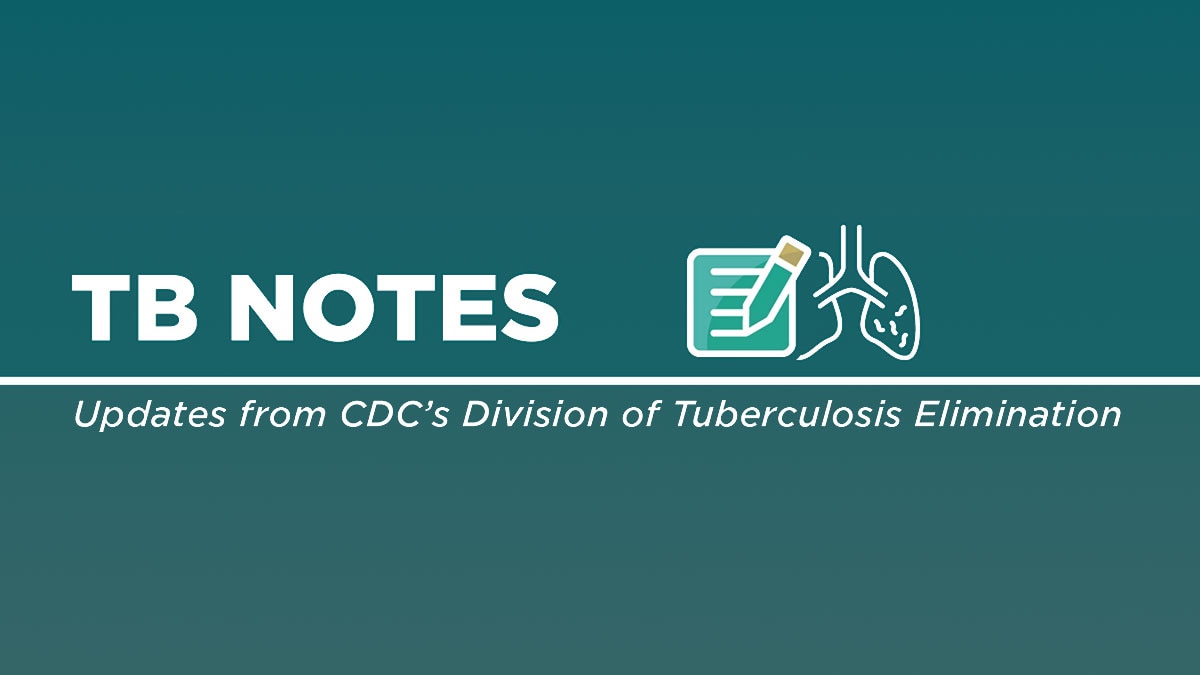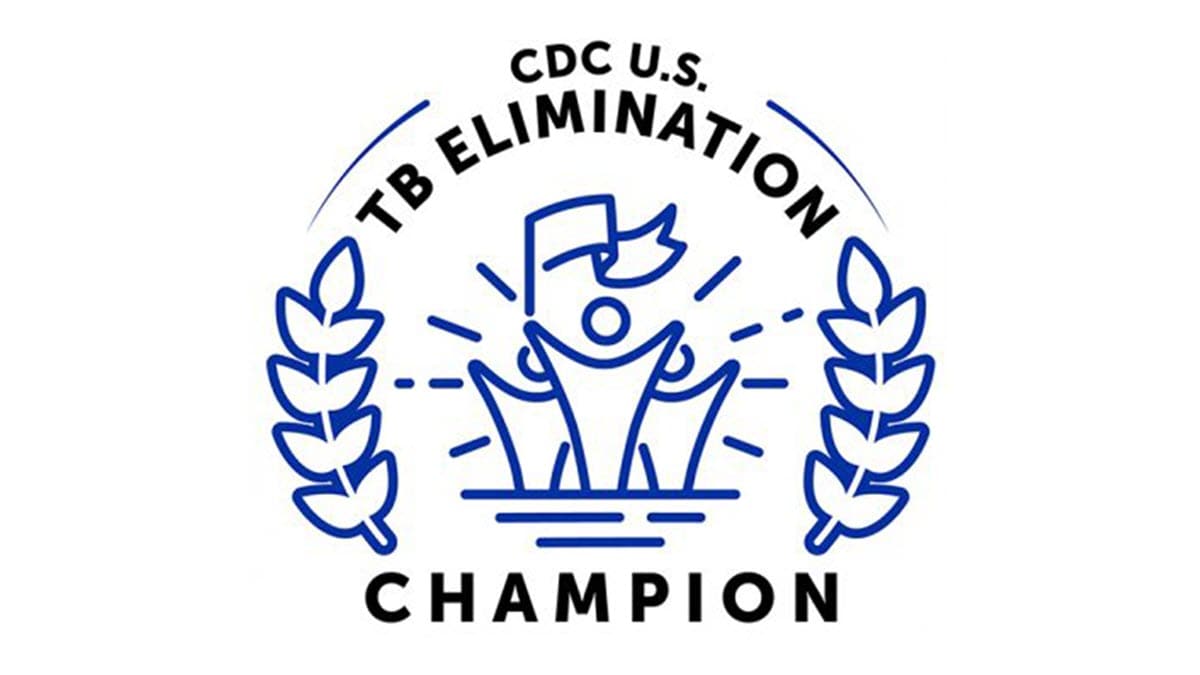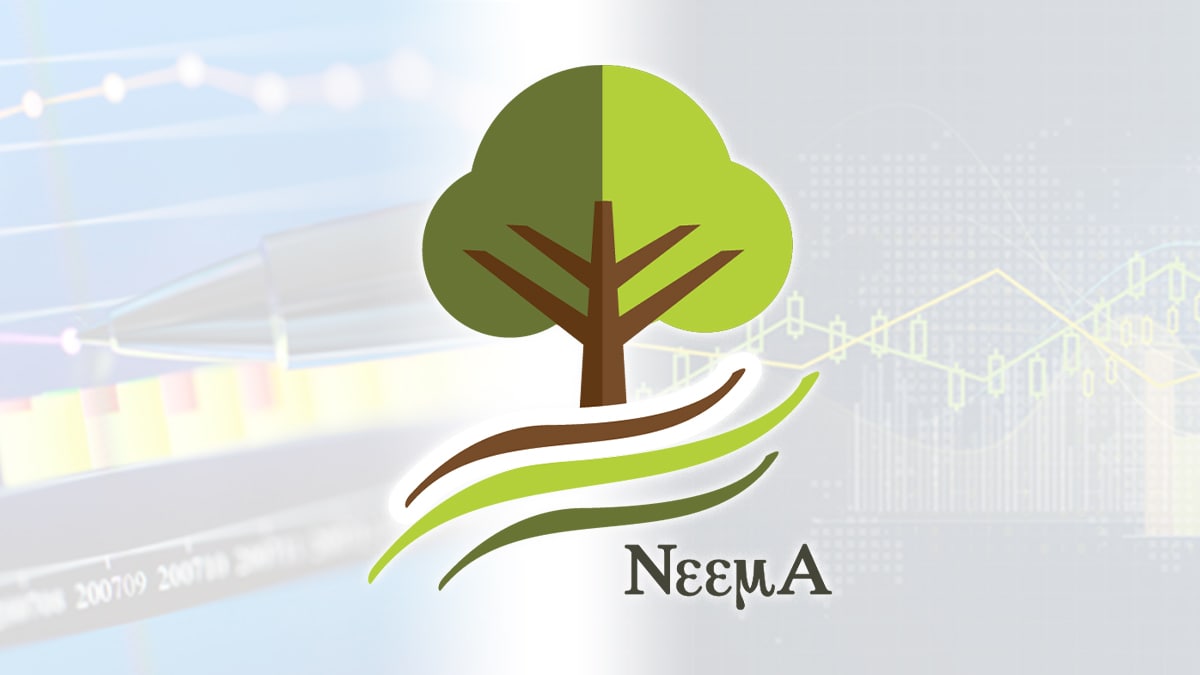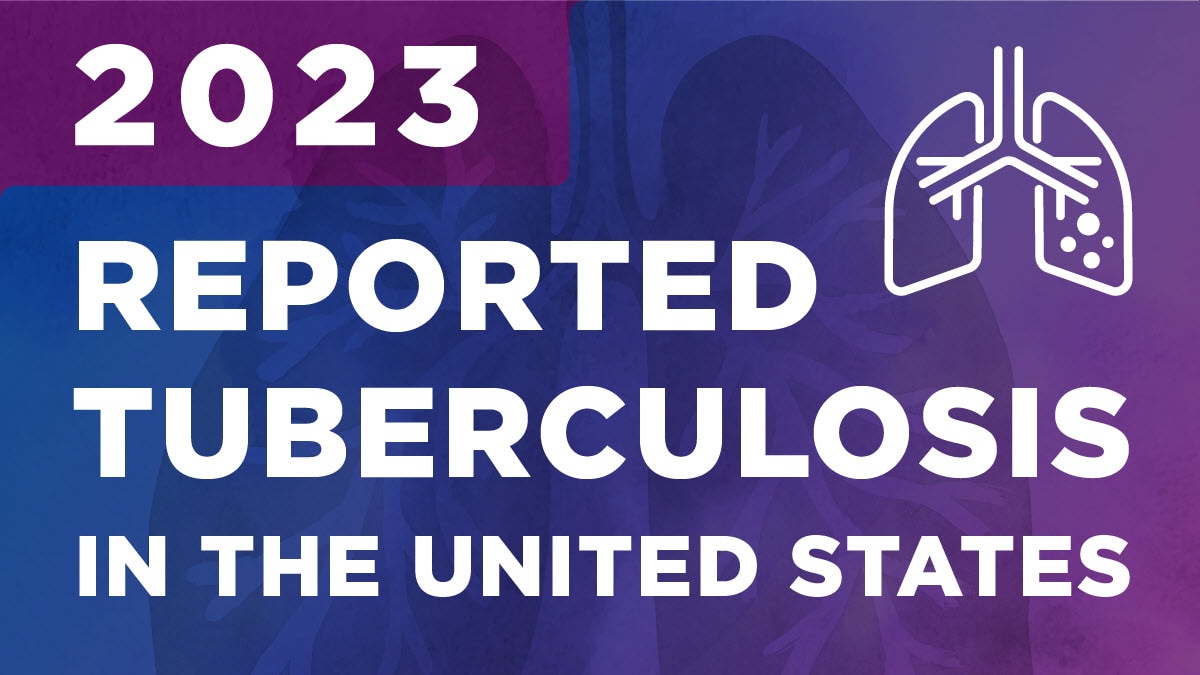About
TB Notes is a quarterly newsletter from the Division of Tuberculosis Elimination, featuring director's notes, updates from branches, activity overviews, and recent publications to keep you informed on CDC's tuberculosis prevention efforts and advancements.

Notes from the Director
Dear Colleagues,
Happy New Year! As we welcome 2025, I hope we can build on our partnership and collaboration to work together to advance our mutual goal of eliminating TB in the United States. As I reflect back on 2024, I want to recognize our partners and program staff for their hard work and dedication to eliminating tuberculosis (TB). Our achievements in 2024 would not have been possible without the commitment and support of our partners.
In November, CDC's Tuberculosis Trials Consortium (TBTC) presented new data at the 2024 Union World Conference on Lung Health on the optimal doses of the 3HP regimen for latent TB infection in children younger than two. This TBTC study, known as Study 35, is making use of a new combined formulation of medication that can dissolve in water and tastes like mango, making it easier for children to swallow.
Also, in November, CDC published Reported Tuberculosis in the United States, 2023. The report showed TB incidence and reported cases have increased for a third consecutive year. These data supplement provisional data released in CDC's Morbidity and Mortality Weekly Report (MMWR) from March 28, 2024.
The CDC is also continuing its 40-year commitment to funding TB programs through a cooperative agreement (CDC-RFA-PS-25-0003). This agreement supports state and local TB prevention, control, and laboratory services to reduce TB morbidity and mortality.
Finally, on December 31, 2024, the American Thoracic Society (ATS), the Centers for Disease Control and Prevention (CDC), the European Respiratory Society (ERS), and the Infectious Disease Society of America (IDSA) published Updates on the Treatment of Drug-Susceptible and Drug-Resistant Tuberculosis: An Official ATS/CDC/ERS/IDSA Clinical Practice Guideline in the American Journal of Respiratory and Critical Care Medicine. The updated guidelines offer patients and health care providers shorter, safer, and more effective regimens with fewer pills and injections. Learn more about the guidelines in CDC's recent Dear Colleague Letter.
2024 has been one of collaboration, progress, and shared commitment to eliminating TB in the United States. I look forward to continuing our work together in 2025.
Thank you for your continued collaboration and dedication. Please read on for more updates and resources from DTBE.
Philip LoBue, MD, FACP, FCCP
Director
Division of Tuberculosis Elimination
National Center for HIV, Viral Hepatitis, STD, and TB Prevention
Office of the Director
CDC Announces Funding for TB Elimination and Laboratory Services
CDC's Division of Tuberculosis Elimination continues its partnership of providing funds to complement state and local efforts to reduce TB morbidity and mortality. In December, CDC announced funding for 60 state, local, and territorial health departments through the new TB Elimination and Laboratory Cooperative Agreement Funding (CDC-RFA-PS-25-0003) for the project period 2025-2029. This funding will support efforts toward TB prevention and control activities and laboratory services. This five-year agreement aims to prevent TB transmission and progression from latent TB infection to active TB disease.

Submitted by Susan McClure, MPH, Associate Director of Policy; Emily Maass, MPH, Public Health Analyst; and Selma Moore, MA, Public Health Analyst, Office of the Director.
Communications, Education, and Behavioral Studies Branch
2024 CDC U.S. TB Elimination Champions
Each year we recognize World TB Day on March 24 with a variety of activities leading up to the official day. Use CDC's World TB Day digital toolkit that has graphics, social media content, and videos to help spread the message to think, test, and treat TB. For updates and additional information about World TB Day, visit the World TB Day website.
Nominate a CDC TB Elimination Champion. This World TB Day, CDC honors the many individuals and organizations who are working in effective and engaging ways to end TB in the United States. The CDC U.S. TB Elimination Champions Project provides an opportunity to recognize their accomplishments in eliminating and preventing TB.
CDC will feature Champions' stories on its website and social media to share best practices and inspire others. Visit the CDC website to nominate a champion by February 14, 2025.

Submitted by Justin Gottlieb, MPH, Health Communications Specialist, Communications Team
CDC Shares New TB Personal Stories
CDC's Division of Tuberculosis Elimination is proud to share seven new stories as part of our ongoing Tuberculosis (TB) Survivor Personal Stories series. These new stories feature six TB survivors discussing their experiences with TB Disease. TB survivors discuss important topics, including:
- How it feels to be diagnosed with TB disease
- Advice for people with TB disease
- Challenges with treatment
- Support during treatment
- Experiences with stigma
- Connecting with other TB survivors
- Why they want to share their story
You can view the videos and print stories on CDC's TB Personal Stories website. Thank you to Renee, RJ, Preeni, Kate, Taylor, and Greg for sharing your experiences to help others and raise awareness about TB disease. CDC would also like to acknowledge and thank our partners We Are TB, The National TB Coalition of America (NTCA), and Stop TB USA for their contributions to this project.

Submitted by John Parmer, PhD, Health Communications Specialist, Communications Team
Data Management, Statistics, and Evaluation Branch
Summary of TB Modeling from the NCHHSTP Epidemiologic and Economic Modeling Agreement (NEEMA) 2.0
Modeling TB epidemiology and intervention costs helps optimize resources and advance TB elimination efforts. CDC supports these efforts through NEEMA, which funds projects focused on TB-related outcomes and populations.
During NEEMA 2.0, (fiscal years 2020–2024), two groups led TB modeling efforts:
- The Coalition for Applied Modeling for Prevention (CAMP) led by the University at Albany, with TB modeling by Johns Hopkins Bloomberg School of Hygiene and Public Health.
- The Prevention Policy Modeling Lab (PPML) led by Stanford University, with TB modeling led by the Harvard T.H. Chan School of Public Health.
As of November 2024, NEEMA projects have produced 33 TB publications, with 11 more in progress. NEEMA also developed two online analytic tools for public health practitioners:
- Tabby 2, a web tool for estimating TB in the United States and for each of the 50 U.S. states and DC through 2050, including cost of interventions.
- A web application tool that shows the projected impact and cost-effectiveness of targeted testing and treatment for latent TB infection among key populations in California, Florida, New York, and Texas.
NEEMA 2 projects found that race and ethnic disparities may cause 45% of U.S.-born TB cases from 2023 to 2035. These disparities could account for 44% of TB deaths and cost $914 million in economic impact.
Upcoming NEEMA Publications Will Address:
- Population attributable fractions of TB associated with HIV, diabetes, incarceration, and recent homelessness, stratified by race/ethnicity
- The impact and cost-effectiveness of latent TB infection testing and treatment among Asian and Hispanic persons with diagnosed diabetes
- The effectiveness and cost-effectiveness of expanded targeted testing and treatment of latent TB infection among the Medicare population
- The impact, costs, and cost-effectiveness of TB outbreak investigations
- The potential impact of county-level interventions to reduce TB disparities
- Post-TB impact on remaining years of life
- The impact of COVID-19 on TB projections
- The cost-effectiveness of latent TB infection treatment in refugee populations overseas verses in the United States
For more information, go to https://www.cdc.gov/neema/php/index.html.

Submitted by Suzanne Marks, MPH, MA, Epidemiologist, Program Evaluation and Health Economist Team
2022 National Contact Investigation Report
DTBE's Program Evaluation and Health Economics Team released the 2022 National Contact Investigation Report. Contact investigations identify people exposed to infectious TB disease. Investigators assess contacts for M. tuberculosis infection and TB disease. They also provide contacts with treatment for latent TB infection or TB disease. Follow-up examinations and treatments for contacts remain a national priority for TB prevention.
Each year, TB programs report contact investigation results to CDC. Programs enter this data online using the Aggregate Reports for Tuberculosis Program Evaluation (ARPE) form. The National Tuberculosis Indicators Project (NTIP) system contains this form. ARPE data are the only national-level source for contact investigations.
Programs report ARPE data in three categories:
1) Sputum smear-positive
2) Sputum smear-negative/culture-positive
3) Other
The 2022 Contact Investigation Report summarizes efforts for TB cases diagnosed in 2022. It includes data from 2018 to 2021.
CDC encourages TB programs to review their data through the NTIP performance-monitoring system. Programs compare their data with national averages to evaluate and coordinate prevention activities. The process strengthens TB control efforts and improves outcomes for affected communities.
CDC staff assist programs in designing strategies to address barriers in contact investigations. They also help programs implement plans to improve performance and achieve national prevention goals.

Submitted by Maureen Kolasa, MPH, Evaluation Team Lead
CDC Releases 2030 National TB Targets
TB programs use national TB performance targets to assess progress toward TB elimination. CDC updates these targets every five years for TB programs in the United States. In fall 2024, DTBE released the 2030 national performance targets. These targets rely on national surveillance data from previous years.
For 2030, CDC calculated targets for each national TB program objective using TB surveillance data reported to CDC from 2015 to 2023. CDC developed a quantile regression model to estimate the 80th percentile for each year. This model predicted the 80th percentile as the target for 2030.
The 80th percentile reflects the projected performance of the top 20% of TB programs in the United States. CDC set the 2030 target at levels reached on average by 20% of programs between 2015 and 2023. Previously, targets reflected performance levels reached by 10% of programs using recent data. CDC revised this approach to create targets that programs can more realistically achieve.
CDC encourages TB programs to learn about the 2030 National TB Performance Targets. Regular monitoring and evaluation help programs track progress and identify areas for improvement. These activities enable programs to recognize strengths and pinpoint opportunities to achieve target goals. Sharing performance outcomes with leadership can drive additional support and resource allocation when needed.

Submitted by Erin Thomas, PhD, Health Scientist, Program Evaluation and Health Economics Team
Field Services Branch
Field Services Branch Medical Officer Leads Pacific Island TB Training Event
Dr. Richard Brostrom, Field Services Branch Medical Officer, served as a clinical trainer for a regional U.S.-Affiliated Pacific Island TB training event. The training, held from December 8 to 13, 2024, included over 60 public health clinicians, nurses, and program staff. Participants came from the Republic of the Marshall Islands (RMI), the Federated States of Micronesia (FSM), and Guam. The training enhanced their skills in TB prevention, diagnostics, and care to strengthen public health in these areas.
Dr. Brostrom collaborated with the Mayo Clinic Center for Tuberculosis (one of the CDC TB Centers of Excellence for Training, Education, and Medical Consultation) to train participants on the following:
- TB diagnostics
- Interpretation of TB chest X-rays
- Diagnosis and treatment of latent TB infection
- Impacts of mass screening
- Mass prevention in RMI
- Updates on TB and diabetes
In 2022, TB incidence in RMI was 258/100,000 persons. This rate was more than 100 times higher than TB incidence in that same year in the United States. Well-planned interventions could substantially reduce TB disease rates in the U.S.-Affiliated Pacific Islands.

Submitted by Caitlin Reed, MD, MPH, Medical Officer Team Lead
Surveillance, Epidemiology, and Outbreak Investigations Branch
Public Release of Tuberculosis Epidemiologic Studies Consortium (TBESC)-II Part B Data
CDC has released a public data set, including a data dictionary and data use guide, for TBESC-II Part B. Part B focused on describing and quantifying the steps in the TB prevention cascade of care within health department clinics. Researchers analyzed the proportions of latent TB infection patients identified, offered treatment, accepted treatment, and completed treatment. The dataset contains data on 25,792 patients visiting 15 health departments during a 6-month window.

Submitted by Kathryn Winglee, PhD, Lead Epidemiologist
Reported Tuberculosis in the United States, 2023 Now Available
On November 13, 2024, CDC published Reported Tuberculosis in the United States, 2023. The 2023 annual report reveals that TB disease incidence and reported cases in the United States have increased for a third year. TB incidence is the highest reported since 2016, and the case count is the highest reported since 2013.
Highlights:
- The reported number of TB cases in the United States increased to 9,633 TB cases in 2023 from 8,332 TB cases in 2022, a 15.6% increase.
- The national TB incidence rate increased to 2.9 cases per 100,000 persons in 2023 to 2.5 cases per 100,000 persons in 2022, a 15.0% increase.
- Of the 50 U.S. states, New York City, and the District of Columbia (D.C.), 42 jurisdictions reported an increase in cases and incidence rate.
- As before the pandemic, TB rates in 2023 were highest among people born outside the United States and people from racial and ethnic minority groups. This highlights the consistent and disproportionate impact TB has on groups that have historically experienced greater obstacles to health care.
- The 2023 annual report demonstrates that U.S. TB programs provided effective health care and treatment services for persons with TB disease even with the challenges associated with the COVID-19 pandemic.
- This year's annual report includes select data from new variables in the revised national TB case report form, including pregnancy, smoking, and history of experiencing homelessness.
CDC created a slide set and infographic to highlight findings from the 2023 surveillance report.

Submitted by Paula M. Williams, DrPH, MPH, Epidemic Intelligence Service Officer
DTBE - Authored Publications
Chang VK, Imperial MZ, Phillips PPJ, Velásquez GE, Nahid P, Vernon A, Kurbatova EV, Swindells S, Chaisson RE, Dorman SE, Johnson JL, Weiner M, Sizemore EE, Whitworth W, Carr W, Bryant KE, Burton D, Dooley KE, Engle M, Nsubuga P, Diacon AH, Nhung NV, Dawson R, Savic RM; AIDS Clinical Trial Group; Tuberculosis Trials Consortium. Risk-stratified treatment for drug-susceptible pulmonary tuberculosis. Nat Commun. 2024 Oct 30;15(1):9400. doi: 10.1038/s41467-024-53273-7. PMID: 39477924; PMCID: PMC11526018.
Chapman Hedges KN, Scott N, Belknap R, Goldberg SV, Engle M, Borisov A, Mangan J. Reasons for acceptance or nonparticipation in iAdhere: a trial of latent TB infection treatment. Int J Tuberc Lung Dis. 2024 Nov 1;28(11):521-526. doi: 10.5588/ijtld.23.0599. PMID: 39468022.
Leithead E 4th, Subramanian S, Pimenta K, Goswami ND, Patrawalla A, Lardizabal A, Haley C, Chen L, Armitige L, Seaworth B, Sylvester B, Bhavaraju R. Analysis of panel physician inquiries to U.S. TB Centers of Excellence, 2018-2022. IJTLD Open. 2024 Nov 1;1(11):490-494. doi: 10.5588/ijtldopen.24.0056. PMID: 39544880; PMCID: PMC11558790.
Swartwood NA, Cohen T, Marks SM, Hill AN, Asay GRB, Self J, Feng PI, Horsburgh CR Jr, Salomon JA, Menzies NA. Effects of the COVID-19 pandemic on TB outcomes in the United States: a Bayesian analysis. medRxiv [Preprint]. 2024 Oct 18:2024.10.17.24315683. doi: 10.1101/2024.10.17.24315683. PMID: 39484245; PMCID: PMC11527069.
